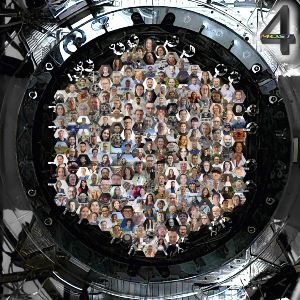First light in the 4-metre Multi-Object Spectroscopic Telescope
13 Nov 2025
On October 18 the 4MOST facility, installed on the VISTA telescope at the European Southern Observatory’s Paranal Observatory in Chile, obtained its first light.
13 Nov 2025
On October 18 the 4MOST facility, installed on the VISTA telescope at the European Southern Observatory’s Paranal Observatory in Chile, obtained its first light.

On October 18, 2025, the 4-metre Multi-Object Spectroscopic Telescope (4MOST) facility, installed on the VISTA telescope at the European Southern Observatory’s (ESO) Paranal Observatory in Chile, obtained its first light. This milestone is a crucial step in the life of any telescope marking the moment it is ready to begin its scientific journey. Moreover, 4MOST does not simply take images of the sky; it records spectra, capturing the light of each object in every individual colour. With this capability, it can unravel the light of 2400 celestial objects simultaneously into 18,000 colour components, allowing astronomers to study their detailed chemical composition and properties.
Once fully operational, 4MOST will investigate the formation and evolution processes of stars and planets, the Milky Way and other galaxies, black holes and other exotic objects, and of the Universe as a whole. By analysing the detailed rainbow-like colours of thousands of objects every 10–20 minutes, 4MOST will build a catalogue of temperatures, chemical compositions, velocities and many more physical parameters of tens of millions of objects spread across the entire Southern sky.
4MOST is the largest multi-object spectroscopic survey facility in the southern hemisphere and is unique in its combination of large field of view, number of simultaneously observed objects, and number of spectral colours simultaneously registered. Development started in 2010 and the facility has been designed to operate for at least the next 15 years.
The 4MOST science team consists of more than 700 investigators from universities and research institutes around the world. In its first five years of operations, 4MOST will conduct 25 different science programmes, ten designed by institute members of the consortium that built the instrument, whereas the other fifteen programmes were selected by an external committee of astronomers nominated by ESO. Uniquely, the multi-fibre nature of 4MOST enables many science programmes to be observed simultaneously. For example, a few fibres can be used to study rare objects, while at the same time another program can use most other fibres to make large statistical samples of stars or galaxies. Highlighted 4MOST science cases are the origin of the chemical elements and the formation of the first stars, the growth of the Milky Way over cosmic time, the formation and evolution of galaxies and black holes, the make-up of the unseen Dark Matter that seems to encompasses most of the mass in galaxies, and the nature of Dark Energy that drives the accelerating expansion of the Universe.
The ACAI chair leads a community survey, the 4MOST Complete Calibration of the Color-Redshift Relation (4C3R2), which will measure approximately 300,000 targets to improve redshift distribution estimates for future photometric surveys such as Euclid and LSST. These improvements will enhance precision of future weak lensing measurements, enabling tighter constraints on cosmological parameters.
We are very excited to see the first results from the telescope!
For further information check out: